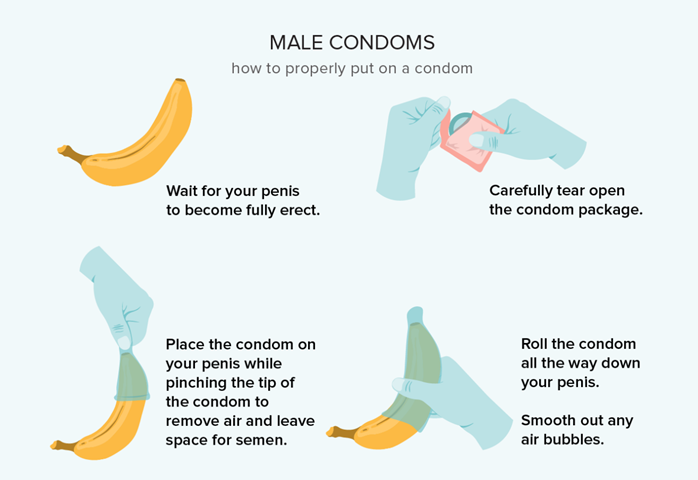A nurse is caring for a client who is one day postoperative following a left radical mastectomy. Which of the following behaviors should alert the nurse to the possibility that the client is having difficulty adjusting to the loss of her breast?
Refusing to look at the dressing or surgical incision
Asking questions about the information on her postoperative care pamphlet
Performing arm exercises once or twice a day
Asking for pain medication every 3 hours
The Correct Answer is A
Choice A: Refusing to look at the dressing or surgical incision is the correct answer because it is a behavior that may indicate difficulty adjusting to the loss of her breast. Refusing to look at the dressing or surgical incision may reflect denial, avoidance, or fear of facing the reality of the surgery and its consequences. It may also indicate low self-esteem, body image disturbance, or depression. The nurse should assess the client's emotional state and provide support and education.
Choice B: Asking questions about the information on her postoperative care pamphlet is not the correct answer because it is a behavior that may indicate a positive adjustment to the loss of her breast. Asking questions about the information on her postoperative care pamphlet may reflect acceptance, curiosity, or motivation to learn about her condition and treatment. It may also indicate high self-efficacy, coping skills, or optimism. The nurse should encourage the client's involvement and provide clear and accurate information.
Choice C: Performing arm exercises once or twice a day is not the correct answer because it is a behavior that may indicate a positive adjustment to the loss of her breast. Performing arm exercises once or twice a day may reflect compliance, responsibility, or self-care. It may also indicate physical recovery, functional ability, or quality of life. The nurse should reinforce the client's efforts and provide feedback and guidance.
Choice D: Asking for pain medication every 3 hours is not the correct answer because it is a behavior that may indicate a normal response to the loss of her breast. Asking for pain medication every 3 hours may reflect pain management, comfort, or relief. It may also indicate trust, communication, or satisfaction with care. The nurse should assess the client's pain level and provide adequate and timely pain relief.
Nursing Test Bank
Naxlex Comprehensive Predictor Exams
Related Questions
Correct Answer is ["C","D","E"]
Explanation
Choice A reason: Baby oil is not an acceptable lubricant, as it can damage the condom and reduce its effectiveness. The students should use water-based or silicone-based lubricants instead.
Choice B reason: Ensuring a tight fit of the condom is not advisable, as it can cause discomfort and increase the risk of breakage. The students should leave some space at the tip of the condom to collect semen and prevent spillage.
Choice C reason: Only using latex condoms is correct, as they are more effective than other materials in preventing pregnancy and sexually transmitted infections. The students should avoid using condoms made of natural skin or lambskin, as they are porous and can allow viruses to pass through.
Choice D reason: Placing the condom on an erect penis is correct, as it ensures proper application and prevents slippage. The students should unroll the condom over the entire length of the penis before any sexual contact.
Choice E reason: Storing the condoms in a cool dry place is correct, as it prevents exposure to heat, moisture, sunlight, or sharp objects that can damage the condom. The students should check the expiration date and integrity of the condom before use.

Correct Answer is C
Explanation
Choice A: "Store your condoms in your wallet so they are ready for use." This statement is not correct and should not be included in the teaching plan. Storing condoms in a wallet can damage them by exposing them to heat, friction, or puncture. Damaged condoms can break or leak during sexual activity and increase the risk of STIs or pregnancy.
Choice B: "Use petroleum jelly with a latex condom for extra lubrication." This statement is not correct and should not be included in the teaching plan. Using petroleum jelly or any oil-based lubricant with a latex condom can weaken the latex material and cause it to break or slip off. Only water-based or silicone-based lubricants should be used with latex condoms.
Choice C: "Put the condom on before engaging in any genital contact." This statement is correct and should be included in the teaching plan. Putting the condom on before engaging in any genital contact can prevent the transmission of STIs or pregnancy by avoiding contact with pre-ejaculate fluid, semen, or vaginal fluid.
Choice D: "You can reuse a condom if it's within 3 hours." This statement is not correct and should not be included in the teaching plan. Reusing a condom can increase the risk of STIs or pregnancy by exposing the partner to residual fluid, bacteria, or sperm. A new condom should be used for each sexual act.
Whether you are a student looking to ace your exams or a practicing nurse seeking to enhance your expertise , our nursing education contents will empower you with the confidence and competence to make a difference in the lives of patients and become a respected leader in the healthcare field.
Visit Naxlex, invest in your future and unlock endless possibilities with our unparalleled nursing education contents today
Report Wrong Answer on the Current Question
Do you disagree with the answer? If yes, what is your expected answer? Explain.
Kindly be descriptive with the issue you are facing.
